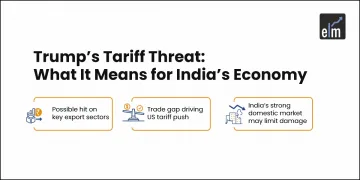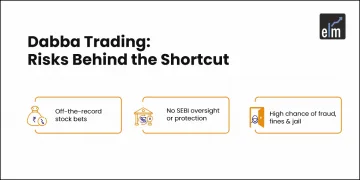Do you know that trading pullbacks in trends are one of the basic trading strategies? Yes! There are many ways of making profits when trading with pullbacks.
Using all time frames, you can earn from trading pullbacks. This is because a trend might appear anywhere from the 5-minute chart to the monthly time frame.
Whether you’re a day trader or a swing trader, you can use our pullback trading approach with confidence.
So, in today’s blog, we will discuss 6 Pullback Trading Strategies for Profitable Trading but before that let us discuss what is meant by pullback trading:
What is meant by Pullback Trading?
A pullback is a pause or moderate dip in the price of a stock or commodity that occurs within a continuing advance.
A pullback is almost the same as retracement or consolidation. The phrase “pullback” refers to price declines that last for a short period of time – say, a few successive sessions – before the uptrend restarts.
After security has undergone a big upward price movement, pullbacks are commonly viewed as buying opportunities.
For example, after a strong earnings report, a stock may see a big surge before reversing as traders with existing positions take profit. Positive earnings, on the other hand, are a fundamental signal that the stock will continue to rise.
Before restarting their uptrend, most pullbacks see a security’s price move to a technical support level, such as a moving average or pivot point. Traders should keep a close eye on these critical support levels, as a break below them could suggest a reversal rather than a retreat.
Now that we know what is pullback trading, let us discuss some strategies that will help us in trading pullbacks:
Pullback Trading Strategies
Here are 6 strategies that you can use when doing pullback trading:
1. Trendlines
It should be rather simple to determine the trend’s direction. The swing high and low structure is the simplest for identifying the trend.
A sequence of higher highs followed by a series of higher lows constitutes an uptrend. Whereas a sequence of lower lows and lower highs constitute a downtrend.
The drawback is that trendlines often take longer to be validated. A trendline requires 3 contact points to get validated. You can always connect 2 random points, but only when you get the third, you are really looking at a trendline.
Therefore, the trendline pullback can only be traded at the third, fourth or fifth contact point.
Trendlines can work nicely in addition to other pullback methods, but as a standalone method, the trader may miss many opportunities when the trendline validation takes a long time.
2. Moving Average
Moving averages are without a doubt one of the most often used tools in technical analysis, and they may be employed in a variety of ways. You can also use them to trade pullbacks.
A 20, 50, or even a 100-period moving average might be used. It actually doesn’t matter, and it all depends on whether you’re a short-term or long-term trader.
Shorter moving averages are used by shorter-term traders to get indications faster. Shorter moving averages are, of course, more susceptible to noise and false signals.
Longer-term moving averages, on the other hand, move more slowly, are less susceptible to noise, but may miss short-term trading chances. For your own trading, you must consider the advantages and disadvantages.
From the above weekly chart of Suzlon Energy Ltd, we can see how 50 EMA is acting as a support and traders can enter the stock if they had missed the buying opportunity at the pullback.
3. Fibonacci
In financial markets, Fibonacci levels work very well and also for pullback traders as well. You do this by waiting for a new emergent trend to emerge, then drawing your A-B Fibonacci tool from the trend origin to the trend wave’s finish. Pullbacks can then be made using the Fibonacci retracement’s C-point.
The new trend drew back quite precisely to the 50 0R 61 per cent Fibonacci retracement before restarting the uptrend, as shown in the chart below.
Fibonacci retracements may be particularly successful when combined with moving averages, and when a Fibonacci retracement coincides with a moving average, those can be high likelihood pullback regions.
Read more about Fibonacci from ELM School
4. Breakout
Price does not always move straight, and price movements of any financial market are frequently characterised by price waves. Moreover, bullish and bearish trend waves alternate in the markets.
The dominating trend waves travelled higher during an uptrend, as indicated in the graph below. The correction waves are movements in the opposite direction of the current trend. Traders who trade pullbacks search for the correction stages and enter trades during those phases.
The concept is that you should wait for the price to “pull back” during a trend to get a better entry price. When the market is rising, and you believe it will continue to grow, you want to enter a trade at the lowest possible price.
Breakout pullbacks are very common, and probably most traders use this price action pattern in trading.
Breakout pullbacks commonly happen at market turning points, when the price breakout of a consolidation pattern. Wedges, triangles, or rectangles are the most popular consolidation patterns.
5. Horizontal Steps
Stepping behaviour can be seen in all financial markets during several trending phases. It’s the price’s inherent rhythm, and it shows the ebb and flow of market activity.
Those stepping patterns are frequently seen during continuous trending phases. This pullback strategy complements the breakout retreat outlined previously. Close to market turning points, the breakout pullback occurs.
However, if a trader misses the initial entry chance, the horizontal steps can help him locate alternate entry opportunities as the trade proceeds.
Additionally, a trader might employ the stepping pattern to pull the stop loss behind the trend in a safer manner. The trader in this example waits until the price has completed a step before pulling the stop loss behind the previous retreat area. The stop loss is then safeguarded and is no longer as vulnerable.
6. Using Trendline and Fibonacci
In this strategy, we use both the trendline and Fibonacci levels for trading the pullbacks. Below are the steps:
- First, we need to identify a Bullish Trend by looking for a series of higher highs and higher lows.
- We can now switch to our selected time frame after successfully spotting the pattern. It might literally be any time frame that you are more at ease with. However, we will use the 1h time period for this pullback trading method.
- Determine the swing low and swing high from the most recent swing. Between the two swings, place your Fibonacci retracement indicator.
- You should buy as soon as we trade within the Fibonacci retracement mark on your chart, which is the area between the 50 percent and 61.8 percent Fibonacci retracement. It’s up to you whether you want to buy when we reach 50% or wait until we reach 61.8 percent.
- The latest swing low, which was utilized to create the Fibonacci retracement levels, can be a very appealing area to bury our protective stop loss.
- In order to profit from trading pullbacks, we also need a profit-taking technique. In this case, the best time to liquidate our position would be when we hit a new high.
To know more about Pullback Trading, you can watch the following webinars:
Webinars on Pullback Trading
1. Trading Pullbacks with ADX and RSI By Amit Seth
Trading Pullbacks can be a very tricky affair. Not all Pullbacks work. We will be looking at a rule-based method to trade Pullbacks by combining Price Action with ADX and RSI to increase the probability of success. The strategy is universal and is applicable for all Timeframes including Positional and Intraday.
A clear and mechanical rule-based strategy would be discussed to define entries and exits. The strategy would focus on the Risk Management aspect and look to provide low risk and High reward entry points.
2. Price action and Pullback Trading by Sanstocktrader
The beauty of a well thought out pullback trading system is that you enter the market or place your first trade only after confirming which way the market is going.
Doing this is going to help you eliminate entering the market with a false signal. Pullback trading is a fantastic starting point for new traders. Trading pullbacks in trends is a basic trend following strategy. There are many different ways to profit from trading pullbacks.
This Webinar will cover price action and pullback concepts along with complete price action and Pullback Trading system.
Bottomline
Trading trend pullbacks might be one of the most profitable trading tactics available. The pullback trading method has shown to be effective time and time again. The fact that we trade in the direction of the prevailing trend is the key to its high success rate.
Buying weakness in an uptrend and selling strength in a downtrend is a simple strategy to profit from trading pullbacks. We hope you found this blog informative and use it to its maximum potential in the practical world. Also, show some love by sharing this blog with your family and friends and helping us in our mission of spreading financial literacy!
Happy Investing!
You can also visit web.stockedge.com, a unique platform that is 100% focused on research and analytics.







Really …one of the best online app to get an insight about stock market and finance. I feel that no book will provide these much of insight and information.
Hi,
We really appreciated that you liked our blog!
Thank you for Reading!
Keep Reading!